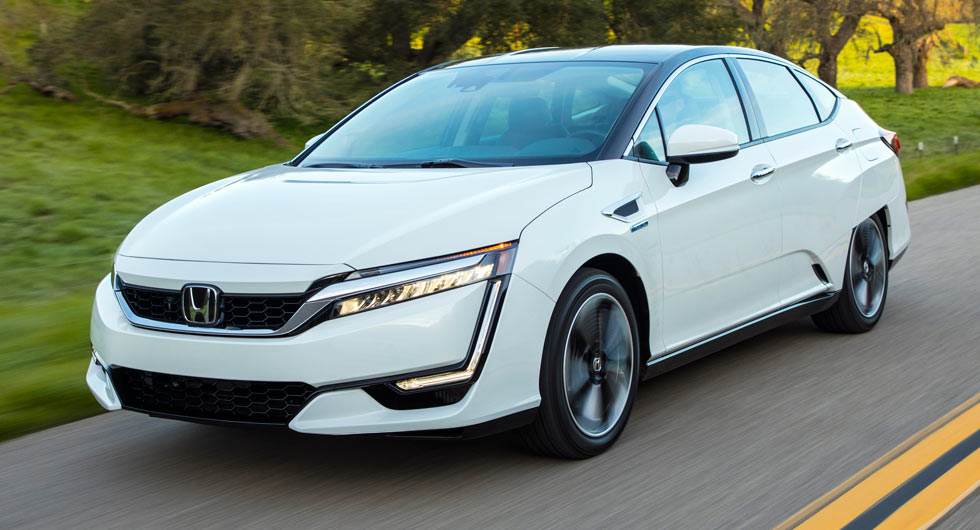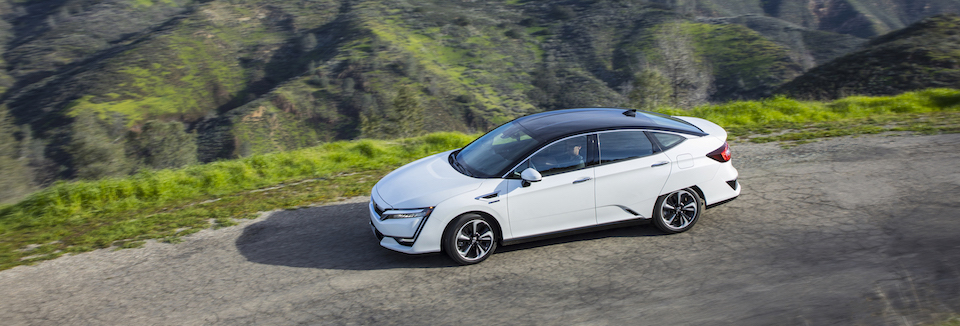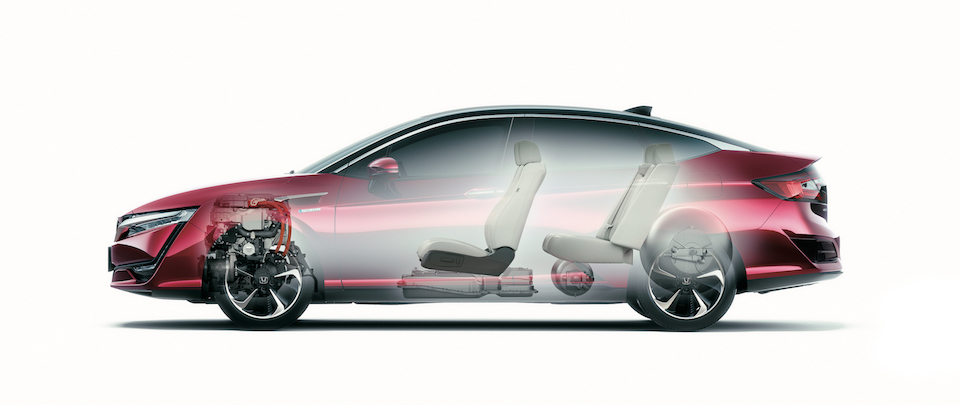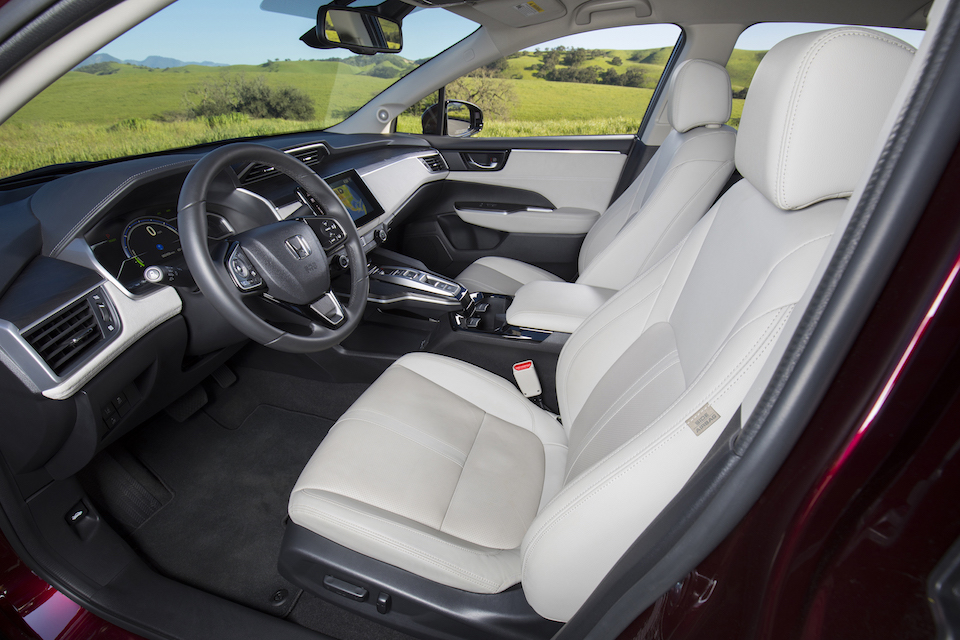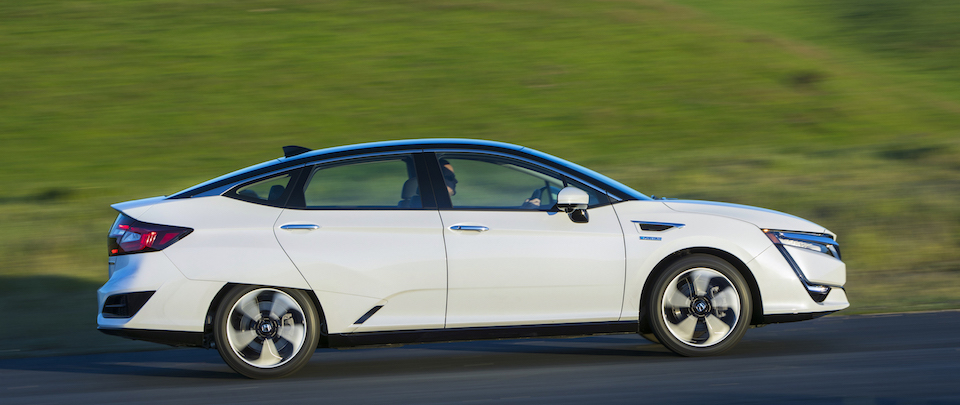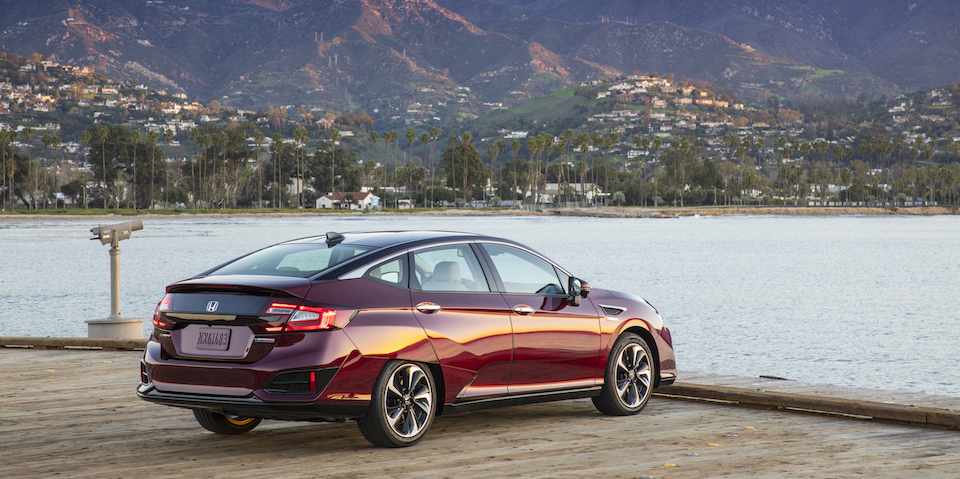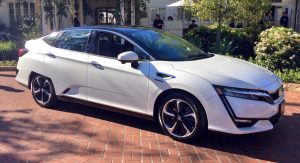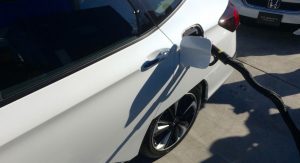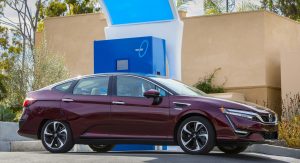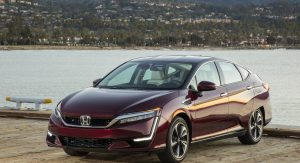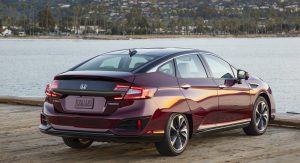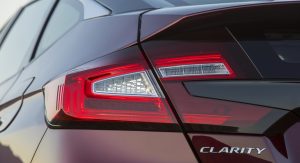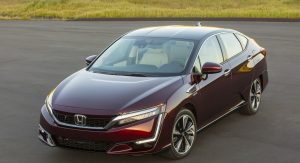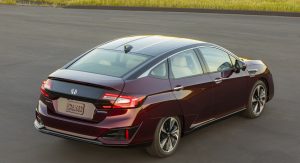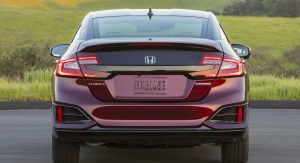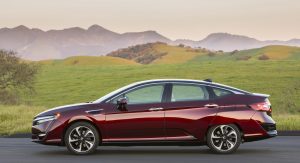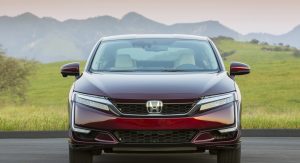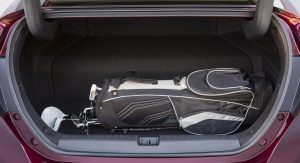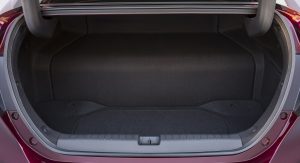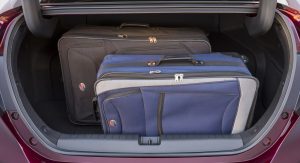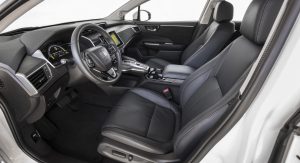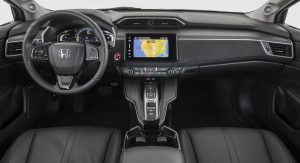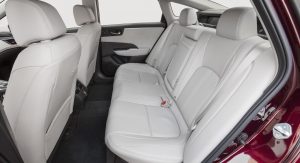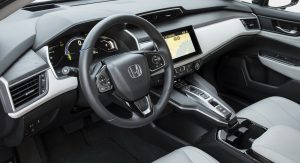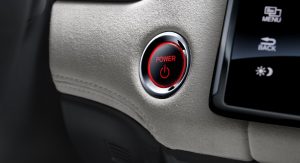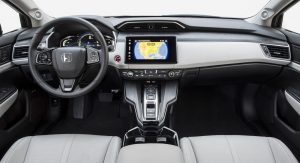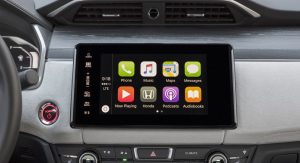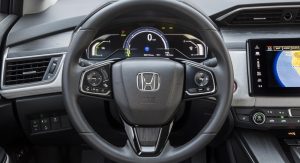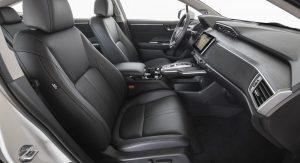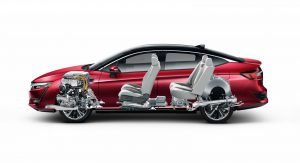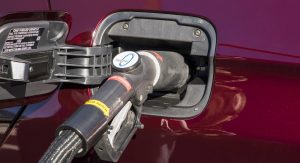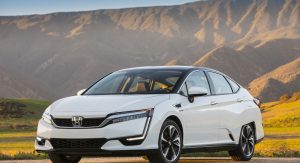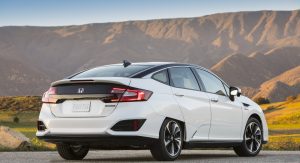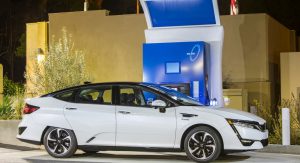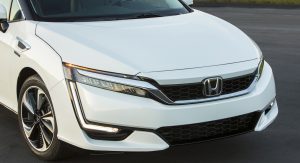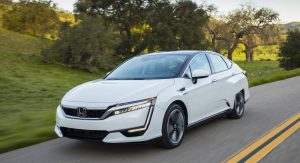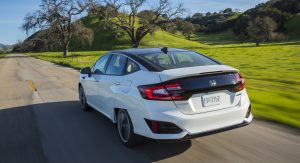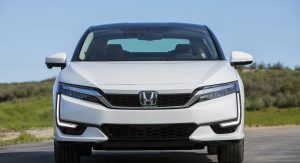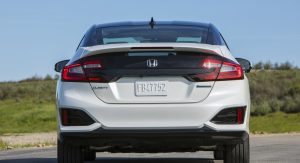What’s the alternative fuel of the future? Everyone’s still looking for one.
Case in point is the Honda Clarity Fuel Cell, the successor to the FCX and FCX Clarity models, which found tens of lessees over roughly a decade.
Sounds like a bust, but Honda is convinced by hydrogen a fuel of the future and the Clarity as its showcase. While the FCX was basically a test for Honda, Honda says this new one is a real car you can lease today – with some caveats on where to get it and fuel it.
That’s why Honda, claiming there is no “silver bullet” to the search for a future fuel, will also offer the Clarity plug-in hybrid or full battery electric vehicle soon.
Regardless of your vision of tomorrow, get used to this face.
Looks like that for a reason
Perhaps second to the feasibility of hydrogen as a fuel, most opinions of the Clarity surround the way it looks.
It would only turn more heads on the street if it made more noise. The front and rear air curtains, according to Honda, help with aerodynamics and make it so the Clarity didn’t need skirts over the wheel to look reminiscent of a post-war Nash. There is some fussy futurism in the face with the pointy running lights and the sparkly trademark LED headlights bordering another version of the corporate Honda grille.
But the Clarity can get away with it among early adopters and alternative-fuel defenders. The GM EV1 made that case 20 years ago. The Honda’s present rival, the Toyota Mirai, doesn’t exactly disappear into the crowd, either.
Honda says the Clarity stayed a sedan because of the packaging challenges of fitting the powertrain and fuel tanks, arrangements that would have prevented flat-folding seats and as expected in a crossover.
Yet the trunk has a small opening and it isn’t nearly as flexible as what you’d get from a similar-in-length midsize sedan. One of the hydrogen tanks prevents the rear seats from folding. The other lives under those seats. But the drive unit is entirely under the hood of the Clarity and it’s more compact than the 3.5-liter V6 Honda puts in its Accord.
As low as the Clarity looks from the outside, it feels relatively tall once you sit inside. It’s good if you’re around 5-foot-10 inches (178 cm), but some may quibble for the power front seats to go lower. At least it’s wide, feeling as spacious as an Accord. Three adults may fit in a pinch, but Honda’s people see that as their major trump over the Toyota, which seats strictly two back there.
A Clarity is packed with stuff, too, equipped like a loaded Accord with 18-inch wheels, navigation, remote start, leather seats that are heated and powered up front, LED headlights and the whole Honda Sensing suite of driver assistance tech. There are interesting touches, like the non-wood inserts for the dash, and then odd ones such as the fuzzy Ultrasuede material scattered all over.
At least no real suede was harmed in the making of this car.
Easygoing, easy fueling
As odd as the Clarity is to look at, it’s surprisingly normal to operate.
There are typically electric-car whirs and graphics in the instrument panel that’s derived from a number of recent Hondas, but these are fast becoming norms for electrified vehicles. You press a Drive button on a gear selector apparently lifted off of the latest Pilot SUV and hit the right turn signal to have the familiar Honda LaneWatch camera pop up in place of the long-hated audio and navigation controls. See, normal.
The fueling process should also be fairly normal to anyone who pumps his or her own gasoline or diesel. In California, there are about two dozen hydrogen pumps scattered around where you pull up, put a card in the reader, put the nozzle into the fuel door, latch it shut and fill the Clarity with full-pressure H70 that goes in at 10,000 psi. It’s done in about five minutes and a full Clarity Fuel Cell has an EPA-estimated range of 366 miles, which is Tesla territory. Even a Chevrolet Bolt does “just” 238 before you have to spend hours at a charging station.
Water line #HondaClarityA post shared by Zac Estrada (@zacestrada) on Mar 15, 2017 at 10:01am PDT
The Clarity gets up to speed smoothly and promptly thanks to a drive unit producing 174 horsepower and 221 lb-ft of torque – up to 30 percent more power than the old FCX had. Top speed is 103 mph. As in other EVs, there is a surge of power from a stop that plateaus once up to highway speeds.
Mountain roads near Santa Barbara proved the Clarity is not the biggest fan of the corners, but thanks to thick insulation all around, you’re constantly going slightly faster than you intended. All of the insulation stands out a bit more when comparing the Clarity to the Mirai, which seems to feel a half-generation behind in refinement not only against the Honda, but other Toyotas and has only been on sale for a couple of years.
The Clarity’s biggest oddity comes from the electric air compressor in the drive unit which sounds like turbocharger whine pumped through tired speakers under hard acceleration. It’s especially apparent in the Sport mode, which doesn’t feel like it does much more than make that noise louder than in the standard setting.
And then there are the looks you get when driving through an environmentally conscious town. Even if you can get your hands on a Clarity Fuel Cell, you’re probably going to be part of a still-small club.
Future versus fantasy
The Clarity Fuel Cell has been on sale since December, with more than 100 so far sent to customers and another 100 or so on wait lists, according to Honda. It’s also already a contender for 2017 World Green Car.
But if you aren’t near one of the two-or-so dozen hydrogen filling stations that are currently operating in California, or somewhere in Japan, the Clarity Fuel Cell might as well still be science fiction. The plug-in electric infrastructure may be in an awkward pubescent phase, but the hydrogen fueling network is still fascinated by Dora the Explorer.
Only a dozen of Honda’s dealerships in California handle Clarity Fuel Cell customers, but Honda officials say the dealer count could be expanded in the near-term once production is able to better meet demand.
But if you meet the criteria and are interested in an alternative fuel vehicle that doesn’t won’t make you as range anxious as most full EVs, the Clarity is a good deal. It’s offered only with one lease for $369 per month for 3 years, with $2,868 due upfront. That also gets you an usually generous 20,000 miles per year, $15,000 worth of fuel and 21 days of rental cars from Avis over those 36 months.
The Mirai is $20 less expensive per month, but only includes 12,000 miles per month, and has similarly restricted availability.
California state legislation could get as many as 100 hydrogen fueling stations up by 2020, including the 25 open now and 32 scheduled to be added by the end of 2018. The east coast of the U.S. may be offered the car in the near-to-mid term. Europe is getting a tour of them and it’s been available to Japanese customers for nearly a year.
As a car, the Clarity is a competent, well-equipped sedan that will find people who fall in love with both the styling and the unusual fueling network. It’s likely the best option for early adopters into this technology right now.
For most every other new car buyer, however, it’s a side conversation that’s going on while we wrap our minds around the next plug-ins
Photos: Zac Estrada/Carscoops and Honda



